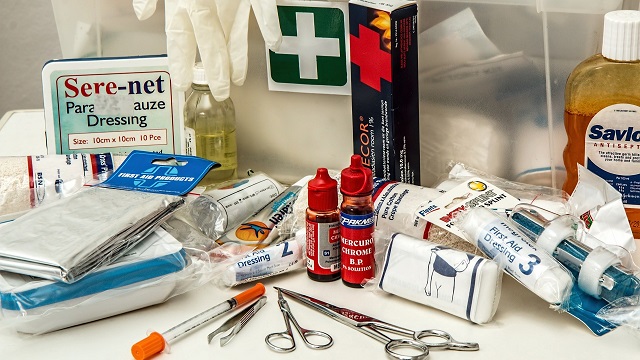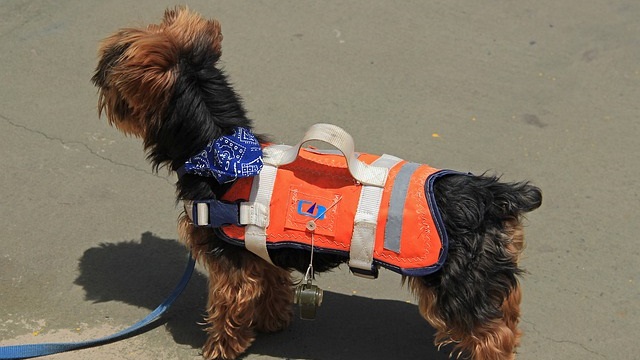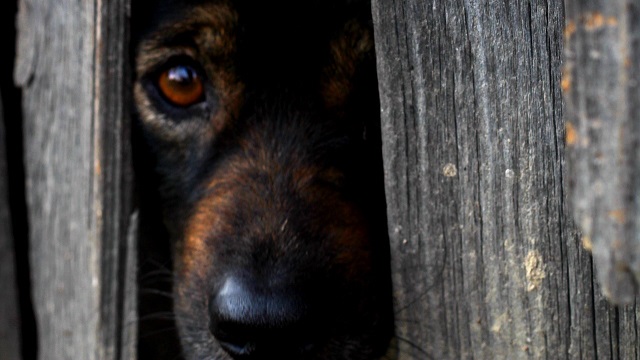When a disaster strikes, follow the motto: If it is not safe for you, it is not safe for your pet. And how can we improve everyone’s chances to be safe and sound? By planning in advance and getting ready for the worst case scenario. Bear in mind that leaving pets out of emergency plans can put them, you and first responders in danger.
Even though this article aims to provide general tips for dogs and cats, making contingency plans for all your pets is vital… Whether they are a tiny fluffy hamster or a big and gentle cow. When it comes to pet disaster preparedness, it’s better to be safe than sorry!
Keep your pet properly identified

Identification is never too much, so go for the entire set! ID tag on the collar, plus a properly registered pet microchip with updated data. The tag should at least include your name, two phone numbers and the pet’s name.
If everything goes wrong, meaning, the tag gets lost or the microchip impossible to scan, there is one last resource: photos! Holding on to recent photographs of you and your buddy together might be the only proof you have that your best friend is really the one you claim to be.
It’s important to keep in mind that a microchip is not a tracking device. A GPS pet tracker like Findster Duo lets you track your pet’s location in real time and keep tabs on their whereabouts.
Find a safe place ahead of time

It is understandable that not every emergency shelter will accept animals during a crisis. Due to this, having a backup plan is mandatory for proper pet disaster preparedness:
- Check for reliable boarding kennels or facilities that provide assistance in case of emergency;
- Ask your vet if the practice takes pets in, if needed;
- Ask the local animal shelter if they provide foster care during a disastrous event;
- Identify hotels or motels outside of your immediate area that accept pets;
- Ask out-of-town friends or relatives if they would be willing to take in your pet if needed.
Have a pet emergency kit ready to go

A proper emergency set up should comprise first-aid supplies and a kit with some daily essentials. Both should be holded together at an accessible and visible spot in the household, preferably near the exit.
Here are a few recommendations:
- First aid supplies you should not forget:
- Hydrogen peroxide – induces vomit and works as a septic solution;
- Purified water – for eyewash and wound cleaning;
- Square gauze and gauze rolls;
- Digital thermometer;
- Blanket to move your pet if they are not able to do it by themselves.
- Other essentials to gather:
- Canned and dry food, water and medications that should last for at least 2 weeks. Keep in mind to regularly check if they are in proper conditions and not expired;
- Bowls, extra collar or harness and leashes;
- Medical records kept in a waterproof container (include the vaccination booklet);
- Disposable litter trays for cats (aluminum roasting pans are perfect);
- Pet shampoo to remove any debris that might get on the fur (common in floods);
- Recent pictures of your pet with you and of any unique body feature;
- Ask your vet for further tips considering the type of disaster most likely to happen.
Follow the authorities’ lead

If a disaster is expected, evacuate early and do not wait for the authorities to force you to do so. Conditions might get severe quite quickly and you might not have the chance to ensure everyone’s safety in such short notice… Therefore forcing you to leave your beloved pet behind. Besides, you will handle your buddy’s natural fear and anxiety much better if not in a rush.
Be prepared in case your buddy is home alone

Focus on having a reliable emergency caretaker chosen well in advance. Pick someone who lives nearby, is trustful enough to have a spare set of keys, and especially, with whom your pet gets along with.
In addition, have some procedure guidelines already prepared:
- Where your pet is likely to be – it is highly probable they are hidden in their safe spots;
- Where to find the pet’s emergency kit;
- How to approach your pet – calmly, gently and step-by-step. Frightened animals may react unexpectedly;
- How to load the cat or dog into the crate, if it applies;
- How to put the harness or collar on;
- Feeding and medication schedules and general daily routines and needs.
Practice, pretend and mimic a crisis

You are probably acquainted with those fire evacuation drills that usually take place in corporations and schools. Some may disregard their utility, but practicing evacuation procedures might give clarity of thought when facing a real hazard. Ideally, all household members – plus your emergency caretaker – should engage in these training sessions:
- Train your pet to be comfortable inside their crate or carrier box;
- Practice different ways of transportation like car, van, on foot or even bicycle – the more variety, the better. You can even contact your local government to learn about the transportation policy and options during disasters;
- Practice removing your buddy from their hidden spot and putting them directly into the crate – this applies mainly for cats;
- If floods are a major concern in your area, then get your pet used to wearing a life vest;
- Acquire first-aid knowledge and skills. It will not replace veterinary care, but will give you the means to readily address injuries and reduce pain.
To make things easier, more engaging and stress-free, use positive reinforcement. Reward your furry friend with plenty of delicious treats while training, and make the simulation sessions a regular habit. That way, you will feel more confident if an emergency arises.
Pet disaster preparedness – conclusion

To sum things up, pet disaster preparedness is all about having a well-delineated contingency plan. It might just save you from serious trouble! Adjust these recommendations to your own probability of being hit by a catastrophe, should it be a flood, fire or even an earthquake. Feel free to reach out to the Findster Care vet team with any concern, or to seek for further advice!
Is your cat getting into their senior years? Learn 5 ways to keep a senior cat healthy and happy!






